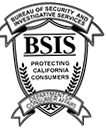Any place, even the seemingly safe locations, can be dangerous for high-profile people, who often face threats of assassination, invasion of privacy, kidnapping, theft, stalking, and assault. These individuals require extra protection and heightened security measures, which go beyond the services of a bodyguard. This is where executive protection comes in.
Executive protection combines a wide range of techniques and measures to ensure the safety of essential persons. Most people limit executive protection to protecting celebrities from unruly fans. However, many people can qualify as executives. For example, high-ranking executives like CEOs build fame because of their coverage in the media.
Company executives play significant roles in their organizations. If they are injured, it would significantly impact the companies they work for. This explains why an increasingly large number of security companies are offering executive protection programs.
Understanding Executive Protection
Also known as executive personal protection, executive protection refers to private risk mitigation and security measures designed to protect high-profile people and their families. High-profile individuals require executive protection services because of the higher personal risk associated with their status, affiliations, net worth, geographic location, or employment.
Attacks targeting executives are common. Most begin with physical surveillance of the executive or their close relatives, which is often followed by an attempted or actual attack. Criminals and malicious actors have devised new methods and tools, opening up many new attack avenues. They have also stepped up preoperative surveillance, which executive protection teams must understand and mitigate.
Cyber surveillance and cyber crimes, including spying on executives, engaging in fraudulent cyber activity related to executives, or stealing their personal information, are also common. This allows criminals fair anonymity as they carry out or prepare attacks. To counter these threats, executive protection personnel must create holistic and thorough executive protection plans.
The best executive protection goes beyond physical prowess. Well-trained and highly skilled executive protection experts use technological tools and intelligence to survey and assess important sites for high-profile people. The sites could include:
- Religious buildings
- Residences
- Educational institutions
- Corporate facilities
- Commercial buildings
Executive protection professionals must master classic physical protection strategies, including planning for executive events and protection of physical facilities.
Individuals That Require Executive Protection
Most people believe the only individuals who require executive protection are those with celebrity status. However, individuals who require these heightened security measures go beyond chart-topping artists or Hollywood actors. Any person categorized as ‘’vulnerable’’ because of their status requires executive protection. These individuals include:
- Wealthy people or high-net-worth individuals
- Performers and musicians
- Very important people (VIPs)
- Professional athletes
- Celebrities who particularly require security when performing in high-attendance events.
- Dignitaries
- Political figures
- Company executives, like chief executive officers
The Role Of An Executive Protection Officer
An executive protection officer, also known as a close protection officer or agent, has specialized tools and training to enhance their prowess. The daily duties of an executive protection officer can significantly vary based on the contract or the form of protection required.
An executive protection officer is a professional whose primary goal is to prevent injury, damage, or death to a high-profile person. Their primary duty is planning and executing a strategy for keeping an executive and family safe and away from harm. As part of these goals, executive protection officers also assess threats, risks, and vulnerabilities.
The duty of an executive protection officer consists of several obligations, including:
Maintaining Confidentiality and Discretion
Executive protection officers are trained to observe the utmost discretion and confidentiality. They are always privy to sensitive information and must operate discreetly to prevent attracting unnecessary attention. If a high-profile person is going about their daily routine, an executive protection officer must ensure their presence is as inconspicuous as possible.
Crisis Management
Executive protection officers are trained to react swiftly and effectively during a security crisis or breach. This could include coordinating with local authorities, communication with the police, and evacuation procedures. For example, the executive protection team of a CEO would have crisis management protocols in place if he/she faces potential kidnapping threats when traveling abroad. An Emergency Response Team (ERT) could also be deployed in casinos during active shooter situations where there could be many high-stakes gamers in one area.
Family and Residential Protection
In most cases, executive protection extends to the close relatives of high-profile people. The security of the family members is essential because threats could go beyond the high-profile person. For example, the family of the prominent person can receive security measures like the primary person, particularly at public events and appearances. Their residences could also be provided with executive protection.
Event Security
Executive protection teams ensure security when a high-profile person attends public events. Security is provided to event attendees and the person hosting the event. For example, a security detail will be implemented if a famous musician performs at a sold-out concert. This can help manage the crowd, enhance emergency response, and deter potential threats.
Counter-Surveillance
Counter-surveillance involves identifying and mitigating potential threats or people trying to gather information about a high-profile person. An executive protection officer can use counter-surveillance measures to detect and stop any individual attempting to monitor a high-profile person’s activities or compromise their security.
Cybersecurity Protection
In the digital age, executive protection goes beyond physical security to cybersecurity. Prominent people are vulnerable to cyber attacks like online harassment, identity theft, or hacking. The best executive protection program for a tech entrepreneur is cybersecurity professionals. These people will monitor and secure the tech entrepreneur’s digital presence and provide security for sensitive information.
Emergency Medical Response
Executive protection officers are often trained to handle emergencies. Some officers have medical training, carry first-aid supplies, or provide advanced life support. The officers usually have medical personnel on standby if a corporate executive attends a significant event. The medical personnel can handle any medical emergencies that arise.
Advance Teams
Advance teams are generally security experts who employ foresight to prepare for upcoming visits or events of a high-profile person. They establish security perimeters, assess venues, and coordinate with local police and security agencies. This typically happens with a threat assessment during a prominent person’s international travel. A team of agents is deployed ahead of time after an evaluation. The executive protection officers remain on the ground before the visit to ensure the area's security, planned movements, and contingencies.
Secure Transportation
An important aspect of executive protection is the secure transportation of prominent individuals. This can involve offering high-profile people safe and discreet transportation to and from different areas. Armored and even tinted vehicles and trained drivers are hired to reduce the risk of attacks or overcrowding during transit. For example, a prominent politician or celebrity can be driven from home to the airport in a secure vehicle. The protection officer serves as the bodyguard or driver during this time. In most cases, the executive protection officers begin their careers in this duty.
Threat Assessment
A thorough threat assessment is carried out before deploying an executive protection team. The evaluation involves evaluating potential direct or indirect threats that a prominent person could face. For example, a president planning a visit to a nation known to have political instability could receive a threat assessment that includes:
- Information regarding local extremist groups, and
- The propensity to kill or kidnap
Specific clothing and language could also make a prominent person more vulnerable to scrutiny and danger if not informed beforehand. Threat assessment could include learning and respecting local cultures and customs to avoid misunderstandings and possible security risks. The executive protection officers focus on mitigating misunderstandings and educating the prominent person if necessary.
Depending on the circumstances, executive protection officers can be deployed alone or as part of a larger team. An essential soft skill for executive protection officers is the ability to work as part of a larger, cross-functional team of professionals.
In most cases, executive protection officers flex beyond their assigned roles to adapt to their bosses' constantly changing work situations and needs. This could happen, mainly when the protection officer protects the executive’s family. A good protection officer weaves into the daily operations of the high-profile person and their family members, ensuring security and safety.
How Executive Protection Officers Implement Executive Protection Program
Executive protection officers engage in continual and substantial planning to develop layers of protection for their principal. The plans can include several contingencies to ensure the safety of the principal, regardless of the changing circumstances. Any executive protection program's advance or planning stage can include mapping the roads and understanding ingress and egress. It could also involve parking within any locations of interest to the executive.
Protection officers have several contingency plans in place if any primary plans fail or an emergency arises. The ultimate mission is to provide adequate security and safety measures while offering the executive a comfortable cushion of normalcy in their daily lives.
Executive protection officers must leverage their knowledge of the principal, enhance their security skill sets, and master various tools to understand, mitigate, and respond to threats. An excellent executive protection officer would proactively mitigate a problem before it becomes a real threat. The most successful executive teams incorporate protective intelligence into the core of their programs. They are also proactive in understanding and combating threats to executives.
Protection officers often conduct background investigations on the executive, their family, and any person determined to threaten the executive. This helps them understand how the digital footprints of the executive or their family are exposed through the patterns developed by technology vulnerabilities and individual decisions.
Executive protection officers use the information gathered during background investigations to determine the likely threats facing the executive’s day-to-day work. The information can also help devise appropriate methods to keep an executive safe in ordinary situations and unusual circumstances, like travel. The threat assessments help form a foundation of elite executive protection operations, mitigating the identified risks.
Executive protection teams must continually evaluate emerging security issues and provide an assessment of the threat after creating a baseline threat assessment. Executive protection professionals are highly skilled with pattern recognition and can identify anomalous behavior. Similarly, these officers are adequately trained to detect threats using technology and tools. They can also identify patterns where human eyes cannot always be present.
Whether Executive Protection Officers Are The Same As Guards
An executive protection officer or agent differs from a bodyguard or security guard, even if their roles appear similar. The main distinction is proactive versus reactive. A bodyguard and an executive protection officer can both keep a high-profile person safe from physical threats like:
- Assassination
- Theft
- Stalking
- Kidnapping
- Invasion of privacy
- Assault
However, an executive protection officer focuses proactively on risk mitigation to keep an executive safe from harm. On the other hand, a bodyguard responds to situations as they arise.
Security guards and bodyguards always act as highly visible deterrents, sending the message to attackers that there will be significant resistance or cost if they attack. Executive protection officers are an integral part of the entire security strategy surrounding the executive but are less visible. They are always effective at countering adverse incidents.
Mobile Surveillance Trailers
Mobile security trailers are becoming an increasingly common way of offering executive protection solutions. Security concerns increase in direct correlation to the number of individuals in a particular area. Events are vulnerable places, with gatherings of all sizes. It is hard to monitor the safety of attendees. The best way to deliver adequate event security is by deploying a mobile surveillance trailer. This method provides critical benefits, making this security solution suitable for physical event environments' realities or related psychology.
Surveillance trailers are a safe yet effective solution because they are only deployed when and where needed. The trailers offer executives top-notch security at a much lower cost than a fixed surveillance system.
Surveillance trailers offer visual evidence of security incidents that compromise an executive’s safety. Human memories fade, especially when stressed, making prosecution of security breaches challenging. However, surveillance trailers can record all the crucial information, irrespective of how chaotic or disorderly the environment is.
The advanced technology and the high effectiveness of surveillance trailers make them a go-to executive protection solution. In addition to tech, a human touch enhances security measures, making events or other functions that executives frequent as safe as possible. The leading benefits of surveillance trailers include:
They Have Surveillance Agents
The greatest asset of surveillance trailers is that they are complete with surveillance agents. The surveillance agents are experienced in public safety, military, and law enforcement. They can monitor events and identify security threats promptly. In a security threat, the surveillance agents can alert the on-site protection officers and the authorities.
No Risk of Power Outages
Surveillance trailers have an advantage over fixed security systems because they are not subject to power outages. Most fixed security systems have the same power sources as event locations, like halls and arenas, making them vulnerable to power outages and susceptible to sabotage. However, surveillance trailers generate their power and are not prone to outages.
Multiple Cameras
Surveillance trailers are complete with multiple cameras. The cameras have high mounts, enabling security personnel to have a birds-eye view of an event and the people in attendance. The high-mounted cameras also make detecting intrusion easy for executive protection officers.
Event Organizers Are Part of The Security Process
Surveillance trailers enable the security personnel and event organizers to use mobile surveillance units. Event organizers do not have to feel nervous and overwhelmed or worry about an executive’s security during an event. The relevant parties can access the security feeds directly on their mobile devices and connect to the operation center to access event images.
Respecting Event Psychology
Surveillance trailers are not intrusive. Therefore, they allow attendees to focus on the event, whether education, recreation, or both. Surveillance trailers operate at a distance and will not disrupt the event mood. Surveillance trailers enhance events’ security without making the attendees feel scrutinized.
Multi-Spectral Imaging
Many security surveillance trailers have a thermal camera. This is handy for monitoring extensive and hidden areas where security breaches can go undetected. Thermal cameras are very effective in detecting potential fire hazards since they can detect even the slightest temperature shifts.
Fast Deployment
Surveillance trailers can be deployed to any location. Event organizers can rent surveillance trailers daily, weekly, or as needed. A surveillance trailer requires minimal setup time. Mobile security options can help organizations save significantly compared to conventional security measures.
Find Reliable Executive Protection Services Near Me
Organizations must ensure executives feel safe and confident when organizing events or other high-profile gatherings. One way of enhancing security is by employing executive protection solutions. At Green Knight Security, we have experienced security personnel who can offer top-notch security. We take pride in our top-notch security equipment, which enables us to adapt to the changing industry needs. You can count on us whether you need executive protection officers or surveillance trailers. Our seamless services and experienced security personnel make us the go-to security company in Los Angeles. Many companies and event organizers trust us with their security protection needs. Contact us at 844-457-8326 to speak to one of our security experts.







